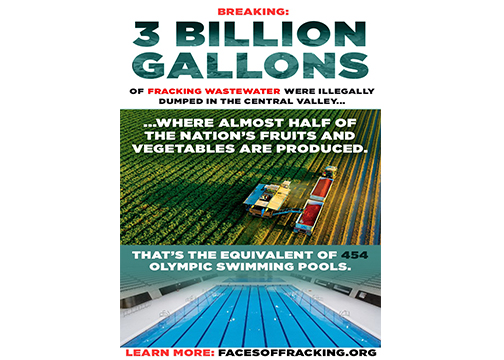This past October, three billion gallons of toxic wastewater were illegally dumped in California’s Central Valley, contaminating aquifers used for drinking and farmland irrigation. With California entering its fourth year of severe drought, the incident couldn’t be more poorly timed.
The wastewater entered the aquifers through nine injection wells that are used to dispose of oil industry waste contaminated with fracking fluid and other pollutants. The Central Valley Water Board found high levels of toxic chemicals, such as arsenic, which is a known carcinogen, and thallium, which is used in rat poison.
Not only does this threaten California’s farmland (the state produces almost half of the nation’s fruits, nuts, and vegetables) but it is a huge public health risk to the communities that live in the region.
And the full extent of the contamination is not known. The water board only tested 8 out of 100 nearby water wells – and the State Resources Control Board said that up to 19 injection wells could have been contaminating protected aquifers.
Furthermore, the water used for fracking is forever taken out of the water supply — further exacerbating drought-stricken California. To put it simply, water and oil just don’t mix.
Tell others about this
Faces of Fracking is a multimedia project telling the stories of people on the front lines of fracking in California.
